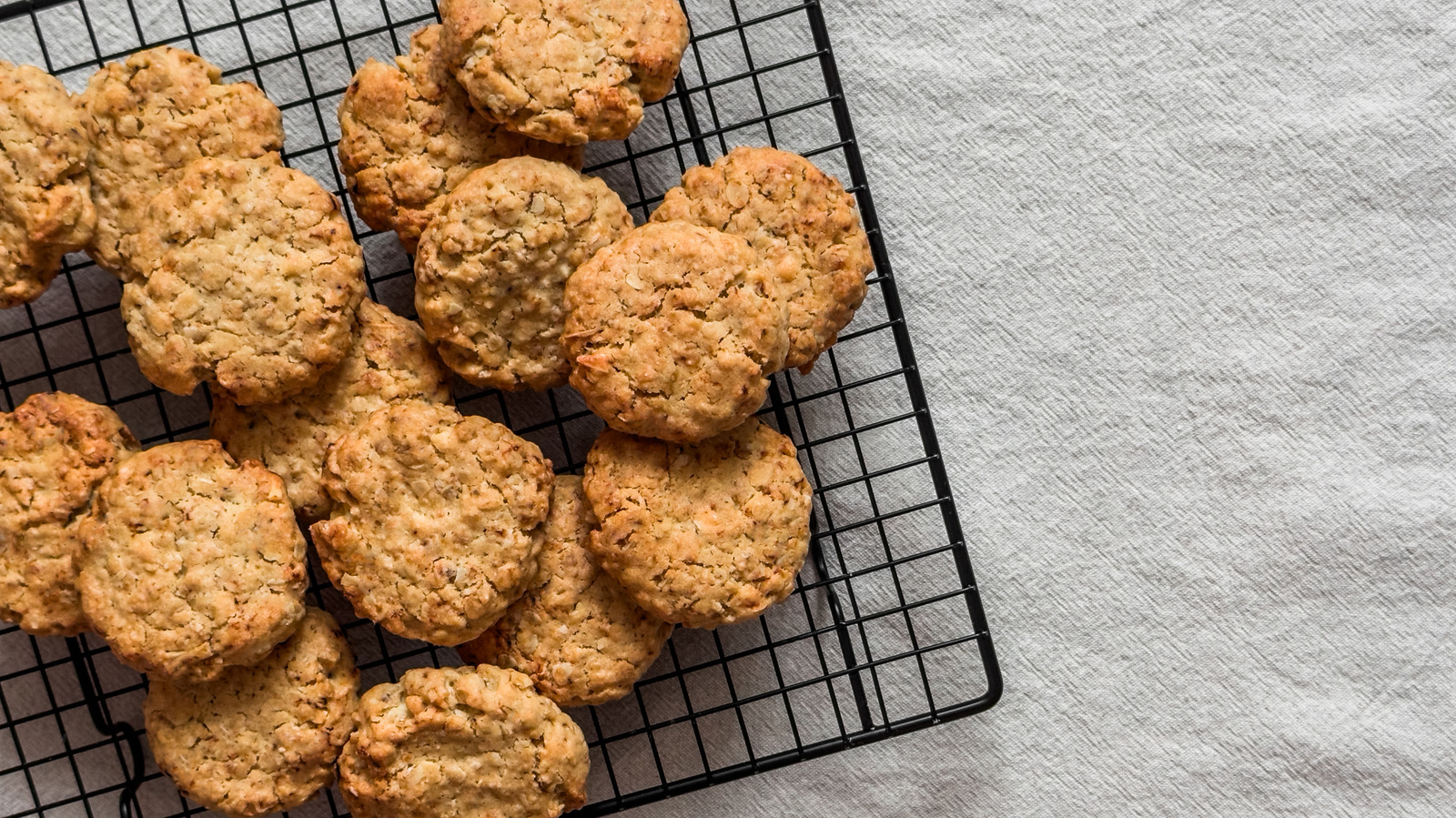The enticing aroma of oatmeal and spices coming from the kitchen as a fresh batch of cookies bakes in the oven is the epitome of comfort. It conjures images of picture-perfect treats that are just begging to be dipped in an ice-cold glass of milk. But when that tray of cookies comes out and they are spread out, flattened discs rather than the perfectly formed treats you were expecting, the disappointment is real. To help avoid such an epic bummer, Chowhound sought out Casey Nunes, education content coordinator and instructor at the Wilton Sweet Studio, to gather some exclusive insight on how to prevent this mistake.
“Flat cookies are cookies that have spread too much,” she explained. There isn’t a single cause, however. Baking involves a lot of factors, and each one needs to be taken into account when you want your bake to result in perfect cookies. And while everyone has their own idea of what a perfect cookie is, from the flavor (chocolate chip or jam-filled or anything in between) to whether the cookies are soft and chewy or crispy and just shy of burned, one thing that just about everyone can agree on is that when a cookie comes out flat, it loses some of its luster. Thankfully, Nunes has offered some useful advice on what missteps cause this cookie snafu and how to avoid them so the baked goods come out perfect every time.
Measure carefully
Baking is clearly an art form, but there is also a lot of science involved, such as the chemical reactions between certain ingredients and the fact that precise measurements are an absolute must. When you’re cooking, you can typically add or subtract ingredients to suit your taste, but with baking, the ingredients have to be exact in order to get the desired results. Casey Nunes, who believes that incorrectly measured ingredients are one potential cause of flat cookies, says, “Make sure you’re leveling your dry ingredients, like flour, sugar, baking soda, and baking powder.”
Each ingredient in a recipe has a specific purpose, such as the flour giving your baked goods form and structure, and the sugar providing the sweetness and helping with moisture retention. You want these ingredients to be able to do their job without overpowering or overshadowing each other. If you’ve carefully measured everything out, all the components will come together in perfect balance. If your oatmeal treats are still coming out flat, then you’ll want to look deeper into the other causes to find out what is going wrong.
Treat your ingredients with proper care
Certain recipes call for cold butter, like a nice flaky pie crust — skipping the ice-cold butter would be a big mistake when you’re baking a pie. However, when you’re baking oatmeal cookies, you’ll want butter that is just the right amount of softened to keep them from flattening out in the oven. Casey Nunes advises making sure the butter is at room temperature but warns not to let it become overly soft or melted before incorporating it into the rest of the ingredients.
The temperature of the butter affects its viscosity, which has a direct result on the shape of the cookie as it bakes. For example, the lower viscosity of melted butter will make it spread out while it cooks (giving you a thin, crispy cookie) rather than holding together for the thicker, fluffier bake you’ll get from softened butter that hasn’t lost all its viscosity yet.
Keep a close eye on the oven temperature
One of the causes of flat oatmeal cookies is an oven that is too hot or too cold. The temperature of the oven has a major effect on the way your food comes out, and recipes are carefully tested to ensure that the recommended temperature is just right. If it’s too hot, you’ll get crispy edges before the inside cooks through, and an oven that is too cold is a surefire way to get cookies that spread out and have sunken centers, leading to the dreaded flat cookie. “Make sure to preheat it well first, and let it sit undisturbed for 15 minutes after it preheats,” says Casey Nunes.
She adds that you should “Double check the temperature with an oven thermometer,” which will ensure that your oven’s temperature is accurate and that you are cooking at the temperature recommended for that specific recipe. This is important since oven temperatures fluctuate (it’s simply how they’re made), and each time you open the oven door, the temperature inside is affected. A thermostat that sits inside the oven will give you a better idea of what the actual temperature is so you can keep an eye on it and adjust accordingly.
The oven isn’t the only place where temperature is important
Baking oatmeal cookies at the right temperature is important so they cook thoroughly and don’t burn, but as Casey Nunes points out, sometimes achieving the right temperature for the dough before you even get to the baking step is equally important. “Chilling the cookie dough as recommended in the recipe before baking, usually an hour or two until it’s firm to the touch, will help keep your cookies from spreading,” she says.
Nunes also warns strongly against skipping this step in any recipe that calls for chilling the dough. Not all cookie dough recipes call for this step, but it’s important to keep in mind that those recipes have been tested to yield the best results for that particular dough. So, if it suggests chilling, there is a reason, and there are plenty of cookie recipes that require this treatment, like delicate lemon shortbread cookies. “Chilling helps your cookies maintain better flavor as it allows dry ingredients to absorb moisture,” she says, “which helps the ingredients to blend together.” As long as you follow the expert tips provided by Nunes and don’t skip the important steps in your recipe, your swaps will give you an oatmeal cookie that bakes with perfect form every time.





